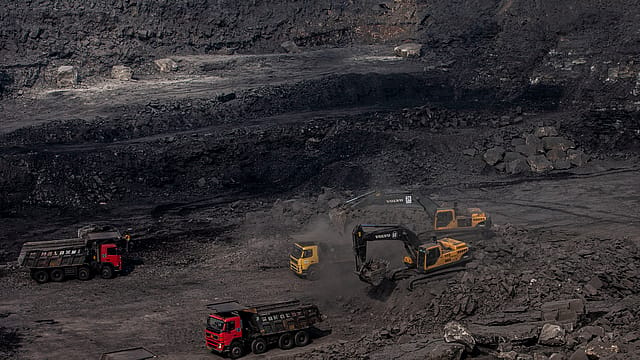Coal India to drive India's coal gasification mission
ADVERTISEMENT

Coal India (CIL) will be driving the country's ambitious coal gasificiation mission that aims to gasify 100 million tonnes (MT) of coal by 2030. Though the Union Budget has touched upon the mission, the Cabinet had already set the ball rolling by approving ₹8,500-crore incentive scheme for coal gasification projects in January. India's gasification project, which entails investments of over ₹4 lakh crore, is aimed at reducing imports of natural gas, methanol, and ammonia.
The PSU will be setting up two projects through joint ventures (JVs) involving an outlay of ₹24,834 crore. The first JV will be a coal-to-synthetic natural gas project being set up at Sonepur Bazari area of Eastern Coalfields, a CIL subsidiary, in West Bengal through a ₹13,052 crore joint venture with Gas Authority of India. The second JV is for a coal-to-ammonium nitrate project through a ₹11,872-crore joint venture with Bharat Heavy Electrical at Mahanadi Coalfields (a CIL subsidiary) in Jharsuguda district of Odisha. Both the JVs will have a debt-to-equity ratio of up to 70:30. Coal India will invest ₹1,997.08 crore for 51% in the GAIL JV and ₹1,802.56 crore for 51% in the BHEL JV.
In the gasification process, coal is partially oxidised by steam, oxygen, or carbon dioxide to produce a liquid fuel known as synthesis gas (syngas), which can be used for power generation. It can also be used to generate urea, methanol, dimethyl ether, and olefins. Union Minister for Coal, Pralhad Joshi, said the JVs will be operationalised by 2028-29. Besides, the government has also approved a ₹500 crore scheme for the coal and lignite gasification projects of PSUs and the private sector.
December 2025
The annual Fortune 500 India list, the definitive compendium of corporate performance, is out. This year, the cumulative revenue of the Fortune 500 India companies has breached $2 trillion for the first time. Plus, find out which are the Best B-schools in India.
Union minister Nitin Gadkari, too, has urged Coal India to look at the possibility of converting economically unviable and low-quality coal producing mines for gasification projects through public-private partnerships. Gadkari had recently said that coal is available in huge quantities in Yavatmal, Chandrapur, and Nagpur districts in the Vidarbha region besides in Madhya Pradesh and Chhattisgarh where Western Coalfields has a presence.
The PSU has identified five surface coal gasification projects at Shilpanjal Pariyojana (WB), Project Utkarsh (MH), and Dankuni (WB), Ashoka (JH), and Mahamaya SCG (CG) and two tenders have been issued in the build-own-operate model.
To support coal gasification and availability of coal for the sector at a concessional rate, the ministry of coal has introduced a policy for concessions of 50% in revenue share for commercial auction of coal blocks. It has also been recommended that all coal companies assign a nodal officer and formulate a plan to gasify at least 10% of their coal production. SHAKTI policy was implemented in coal gasification projects to minimise operating costs by allocating long-term coal linkages through auction.
Domestic coal production has increased from 728.72 MT in FY22 to 893.08 MT in FY23, a growth of 22.6%. India has announced environmental targets as its Nationally Determined Contribution under the Paris Agreement in 2016 and coal gasification leads the advancement of non-fossil fuel-based energy resources.
In the private sector space, Reliance Industries has transferred its gasification undertaking to its wholly owned unlisted subsidiary, Reliance Syngas. The gasification project was set up in Jamnagar refinery to repurpose into feedstock for the refinery off-gas cracker, which helps in the production of olefins.
